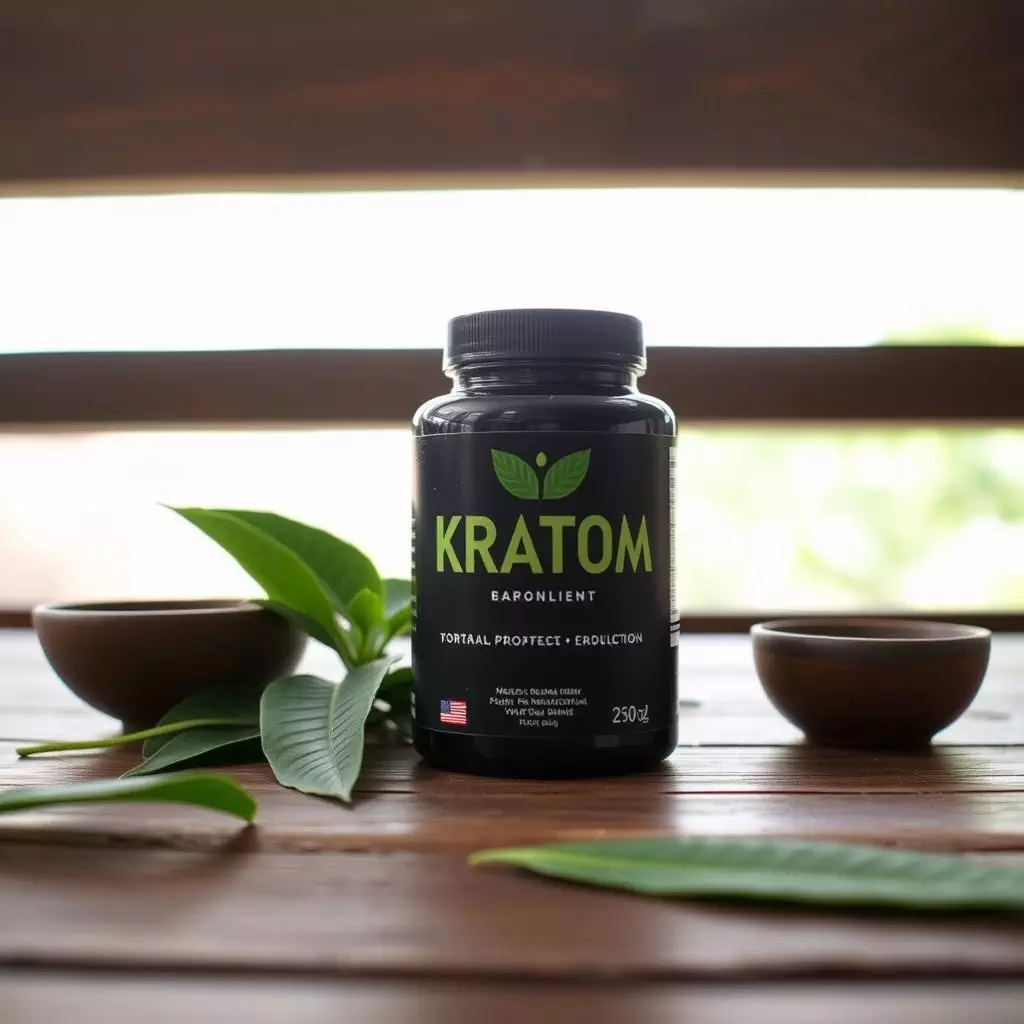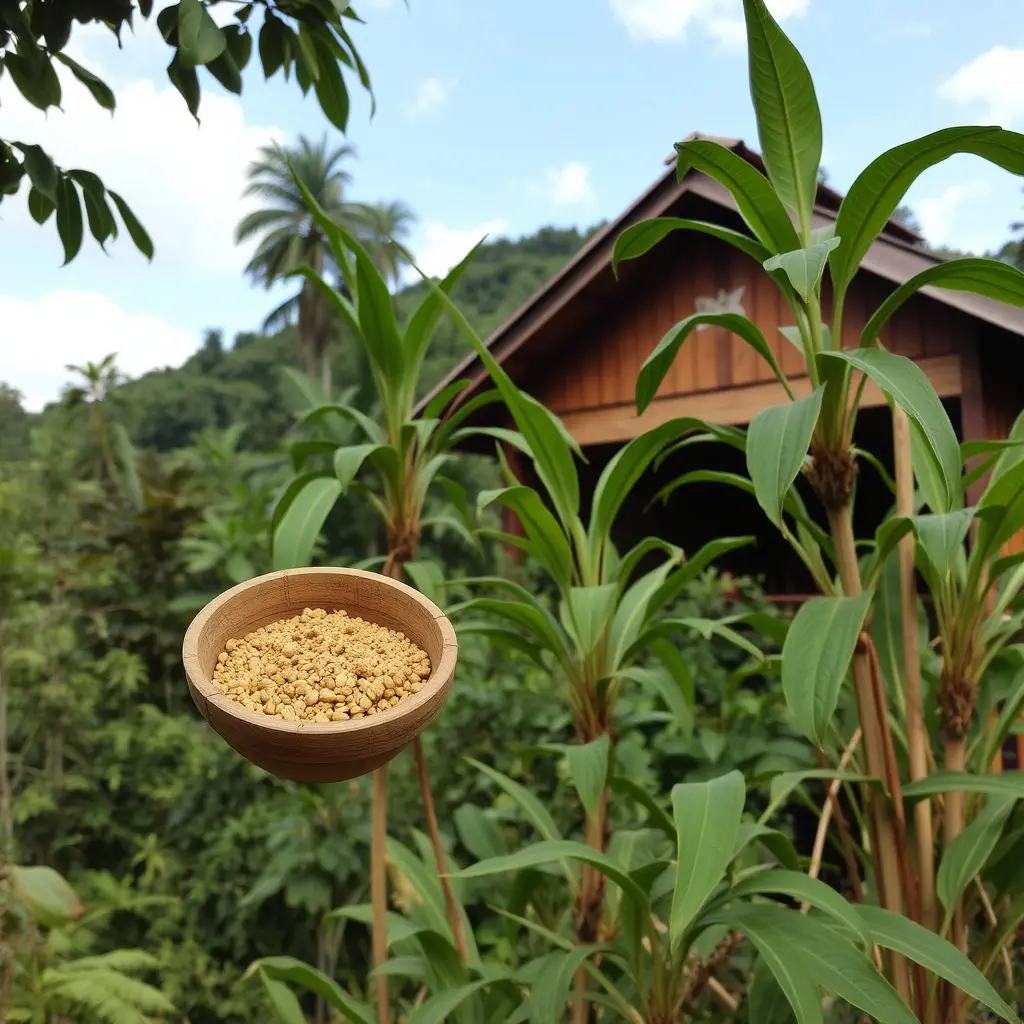Kratom has been recognized for its potential role in enhancing athletic performance through natural pain management. The compounds mitragynine and 7-hydroxymitragynine found in kratom can modulate pain perception, reduce fatigue, and boost energy levels, which are beneficial for athletes engaged in endurance training and recovery from intense physical activities. These effects may stem from kratom's interaction with opioid receptors, offering a safer alternative to prescription painkillers with fewer side effects. Athletes across various disciplines like strength training, endurance running, and martial arts have reported positive outcomes in pain management and focus. However, it's imperative for athletes to consult with healthcare professionals before incorporating kratom into their routines due to the need for personalized dosing and potential drug interactions. Kratom-supported athletic performance can be optimized through careful dosage tailored to individual responses and adherence to safety guidelines, ensuring a natural approach to pain management that aligns with sports regulations and enhances overall well-being and performance. Legal considerations must also be factored in, as kratom's status varies by region.
Exploring the intersection of wellness and athleticism, this article delves into the potential of kratom supplements for natural pain management. Known for its alkaloid profile, kratom has garnered attention within athletic circles for its role in enhancing performance and managing discomfort. We will unravel how these natural compounds can be harnessed effectively and safely, guiding athletes towards optimizing their routines with a focus on Kratom-Supported Athletic Performance. Join us as we navigate the therapeutic benefits of kratom and offer insights into its analgesic properties and integration into a balanced athletic regimen.
- Unlocking Natural Pain Management: The Role of Kratom in Enhancing Athletic Performance
- Understanding Kratom's Analgesic Properties and Their Impact on Athletes
- Integrating Kratom into a Healthy Athletic Regimen: Safety, Dosage, and Best Practices
Unlocking Natural Pain Management: The Role of Kratom in Enhancing Athletic Performance

Kratom-supported athletic performance has garnered attention within the realm of natural pain management, particularly among athletes seeking to enhance their endurance and recovery. The mitragynine and 7-hydroxymitragynine alkaloids found in kratom are believed to play a significant role in modulating pain perception, reducing fatigue, and elevating energy levels. These effects can be beneficial for athletes engaged in rigorous training regimens or high-intensity competitions. By incorporating kratom supplements into their routines, many athletes report improved physical capabilities, which may contribute to better performance outcomes. The analgesic properties of kratom are thought to be a result of its interaction with the body’s opioid receptors, providing relief from chronic and acute pain without the side effects commonly associated with prescription pain medication. This allows athletes to train harder and recover faster, potentially leading to enhanced athletic performance and improved overall well-being.
Furthermore, the use of kratom as a natural supplement in athletic training is supported by anecdotal evidence from various sports disciplines, including strength training, endurance running, and martial arts. Athletes who have integrated kratom into their training routines often cite its effectiveness in managing pain associated with injuries or overuse, as well as its role in maintaining mental focus and motivation. However, it is imperative for athletes to consult with healthcare professionals before incorporating any new supplement like kratom into their regimen, given the potential for interactions with other medications and the need for personalized guidance on appropriate dosing and usage. With careful consideration and professional oversight, kratom-supported athletic performance can be a valuable aspect of natural pain management strategies for athletes at all levels.
Understanding Kratom's Analgesic Properties and Their Impact on Athletes

Kratom, a plant native to Southeast Asia, has garnered attention in recent years for its potential analgesic properties, which are of particular interest to athletes seeking natural pain management solutions. The primary alkaloids found in kratom, mitragynine and 7-hydroxymitragynine, have been studied for their impact on pain perception and athletic recovery. These compounds interact with the opioid receptors in the body, offering a natural analgesic effect without the side effects typically associated with synthetic opioids. This interaction can be particularly beneficial for athletes who experience acute or chronic pain due to intense training or injury.
Moreover, kratom’s influence on athletic performance extends beyond its pain-relieving capabilities. By promoting homeostasis and regulating the body’s stress responses, kratom may enhance endurance and stamina, which are critical for athletes. Strains with stimulant properties can provide a boost in energy and focus, aiding in improved athletic performance during training or competition. Additionally, some athletes report that kratom helps to alleviate post-exercise soreness, leading to quicker recovery times and the ability to train more consistently. As such, kratom-supported athletic performance represents a promising area of research for those interested in natural alternatives to traditional pain management and performance enhancement strategies.
Integrating Kratom into a Healthy Athletic Regimen: Safety, Dosage, and Best Practices
Integrating kratom into a healthy athletic regimen requires careful consideration of safety, dosage, and adherence to best practices. Kratom, derived from the leaves of the Mitragyna speciosa tree, has been traditionally used for its stimulant and sedative effects, which can potentially enhance athletic performance when consumed responsibly. For athletes seeking to incorporate kratom into their routine, it’s crucial to understand the nuances of this supplement. Kratom alkaloids, such as mitragynine and 7-hydroxymitragynine, interact with the body’s opioid receptors, which can influence pain perception and energy levels. This interaction may help athletes manage pain associated with training and competition without relying on prescription opioids.
When it comes to dosage, individual responses to kratom can vary significantly, making a ‘one size fits all’ approach inadvisable. Athletes should start with a low dose to gauge effects and gradually titrate up as needed, always within recommended guidelines. It’s also imperative to consult with a healthcare provider before integrating kratom into any training regimen, as it may interact with other medications or supplements. Additionally, athletes should be aware of the legal status of kratom in their jurisdiction and ensure compliance with all relevant laws and regulations. Proper dosing and safety measures, coupled with regular monitoring for any adverse effects, can help maintain kratom-supported athletic performance while minimizing risks.
In recent years, the integration of natural remedies for pain management in athletic performance has garnered significant attention. This exploration into the potential of kratom supplements within this context has shed light on their multifaceted role in supporting athletes’ well-being and enhancing their performance. The article delineated how kratom, with its unique analgesic properties, can be safely incorporated into athletic regimens, offering a viable alternative to conventional pain medication. By understanding the proper dosage and application of kratom, athletes may harness its benefits while maintaining their competitive edge, as evidenced by emerging research on kratom-supported athletic performance. As such, it is clear that kratom holds promise for those in the athletic domain seeking natural methods to manage pain and improve their sporting endeavors.






